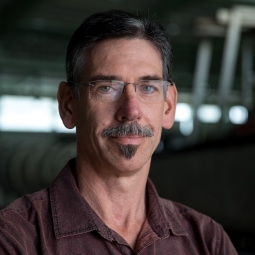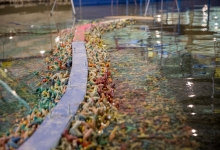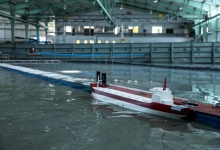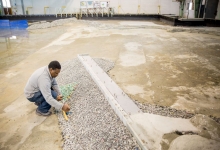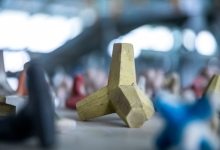Coastal Engineering and Port Infrastructure
The CSIR’s coastal engineering and port infrastructure (CEPI) group, situated in Stellenbosch in the Western Cape, focuses on research in the marine and coastal engineering domains. This includes port layout and ship maneuvering optimisation through physical and numerical modelling, the assessment of structures (breakwaters, quays, revetments and groynes), using the latest techniques, and the development of decision-support systems to aid ports in operational efficiency and safety.
The CSIR undertakes marine surveys and data collection in support of projects related to marine construction (ports and harbours, marinas, and pipelines). The organisation manages and operates the largest physical hydraulic modelling facility in the Southern Hemisphere, enabling physical model tests of marine structures as well as ship motions and ship maneuvering to be conducted using innovative technologies developed by the group.
Value proposition
- Innovative and customised solutions to complex challenges.
- Largest hydraulics laboratory in the Southern Hemisphere with some of the largest basins in the world.
- Ability to measure sub-millimetre movement for wave agitation and ship motion studies.
- Comprehensive suite of software for navigation and moored ship studies.
- Wide range of metocean capabilities.
Capabilities
Physical modelling
- Stability testing.
- Agitation testing.
- Ship motions and ship navigation.
- Scour 2D and 3D.
- Force measurements.
- Overtopping
- Dam hydraulics.
Numerical modelling
- Ship motions (moored).
- Ship navigation (pilot training).
- Nearshore hydrodynamics.
- Port resonance.
- Wave measurements.
- Wind measurements.
- Water level measurements.
- Flow (current) measurements.
- Water quality measurements.
Survey
- Bathymetric, including estuaries and rivers.
- Beach profile assessment (erosion, accretion).
- Dam survey (volume calculation).
- Dredge assessment.
Infrastructure
Laboratories: The CSIR in Stellenbosch houses a world-class coastal and hydraulics laboratory. The facility is used for physical hydraulic model testing. It covers an area of 11,000 m² and comprises various wave flumes and wave basins for both 2D and 3D tests, respectively.
The wave generators used in 3D and quasi-3D physical model tests comprise a multi-element rack and pinion paddle type wave generators manufactured by HR Wallingford.
Equipment: The CSIR has a large pool of equipment at its disposal for collecting data in the metocean environment. Some equipment is suitable for depths of up to 6,000 m and some is exclusively used in nearshore applications. Wind, waves, ocean currents, tide, and water quality are routinely measured parameters.
Software: The group has a comprehensive suite of software at its disposal that is used for hydrodynamics, ship navigation, and ship motion studies.







